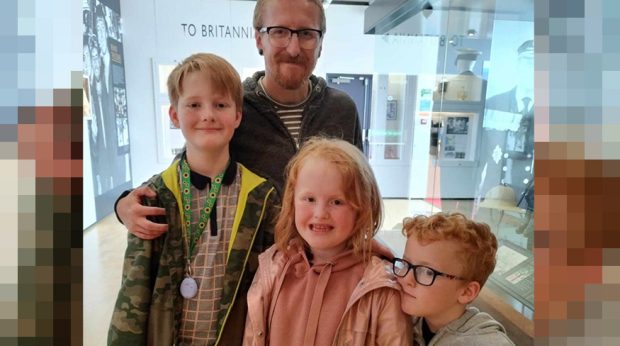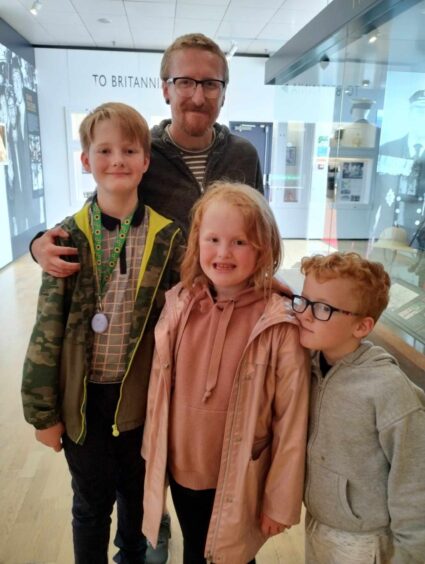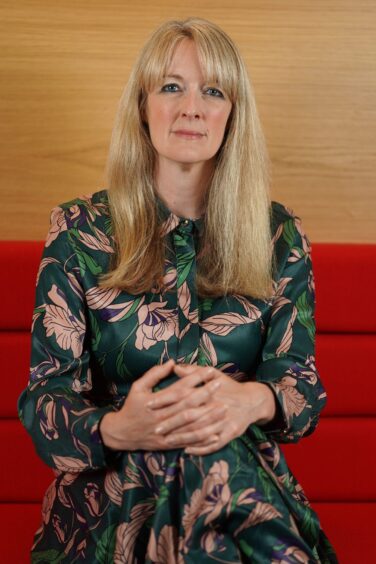
Campaigners warn a child will die unless legislation is brought in to prevent the restraint of disabled pupils at schools.
Scottish Government guidance on restraint of vulnerable children is to be published imminently, as new figures show there have been at least 221 new cases this year resulting in victims being bruised and traumatised.
Beth Morrison, of campaign group Positive And Active Behaviour Support Scotland (PABSS), said: “Unless we make it illegal to restrain, nothing will change, and I genuinely fear a child will die.
“I’ve been getting empty promises from the Scottish Government for more than 14 years on this. If anything, I’m seeing and hearing of more cases than ever before.
“Some of the injuries being reported to me are horrific and, more often than not, restraint and isolation is being used as a punishment.
“We are talking about the most vulnerable, disabled, non-verbal children from the age of three years old being tied to chairs or being physically pinned to the ground because they apparently did not follow orders.
“These children are not deliberately misbehaving. They are showing a distress reaction because they do not understand what is being expected of them. We are talking about severely disabled children who cannot speak or understand.”
Restraint on disabled children
Morrison started campaigning for change after her autistic son Calum, who also has learning difficulties, epilepsy and cerebral palsy, was restrained for 40 minutes by nine adults until he became unconscious at a special Dundee school.
Calum was just 11 years old.
Morrison said: “Staff tied him to a chair and a teacher stood over him with an egg timer to show him he was being punished. Calum is still suffering the aftermath of that incident. It changed his life, and ours.
“We know of children with broken ribs, petechial haemorrhaging, severe bruising, cuts, broken collarbones and limbs, broken noses and bleeding lips and broken teeth.” As there is no mandatory recording of incidents, parents say that they are often left in the dark.
Morrison said: “If a parent left a child bruised, there would be an immediate social work investigation. But this is happening every day in our schools, and it is virtually unheard of for any teacher or staff member to be investigated or questioned by the police.
“Schools are carrying on restraining our children and putting them into isolation rooms for hours.
“There must be mandatory oversight of what is happening. When he was education secretary, John Swinney said repeatedly that he supported statutory rules on restraint. He has the power to make that happen as First Minister.”
Children’s rights
The United Nations Convention of the Rights of the Child is set to become embedded in Scottish law, but there is still no robust framework on the restraint and isolation of children, or proper training for school staff on how to deflect and de-escalate if a child becomes upset.
UNCRC rules explicitly prohibit the use of restraint, isolation and seclusion as disciplinary measures in schools and care settings. They state it must only be used as a last resort and to prevent harm. The latest figures from PABSS show 6% of children being restrained are just three years old. By age eight, the figures rise to 33%. Not one incident has been reported of a child after 10 years old.
The Children’s Commissioner has been demanding an end to restraint since the publication of their shocking No Safe Place report in 2018. Calls are also being made to ensure police are trained to interview disabled children so their voices can be heard within the criminal justice system.
In recent years only one teacher has been convicted. Linda McCall, 63, from Earlston, was found guilty of attacks on five autistic pupils aged between five and seven. She was ordered to do unpaid work and retired as a teacher. McCall had originally been cleared by Borders Council of any wrongdoing.
The Scottish Government said: “Restraint and seclusion in schools must only ever be used as a last resort to prevent the risk of harm and existing guidance on physical intervention and seclusion, published in 2017, remains in place.
Scottish Conservative Social Justice Shadow Secretary Miles Briggs said: “I’ve seen distressing photographs of the dreadful injuries some of these children have suffered as a result of being restrained, it’s simply unacceptable that this is happening in our schools to disabled children. It’s beyond shocking.
“I’m deeply concerned the number of these incidents are on the rise. We must have statutory legislation and mandatory reporting of incidents. Anything less is unacceptable and breaches human rights and UNCRC.
“The Scottish government have had 14 years to deal effectively with restraint, but they have repeatedly failed to do so despite the overwhelming evidence showing the harm that is being done.
“If their new guidance does not go far enough, nothing will change.”
A teacher fell on top of our boy and pinned him to the ground
A teacher restraining a five-year-old autistic pupil fell on top of him and continued pinning him down as he screamed for help.
Joseph Morton’s first days at Gilmerton Primary School in Edinburgh were so traumatising, the little boy has been terrified ever since of going to school.
Edinburgh City Council has also upheld a complaint that the school breached their Relationships, Learning & Behaviour policy despite staff “consistently” describing the practice as being “in the interests of enabling Joseph to engage with school”.
His father Alan, 37, said: “Your child going to school for the first time should be a significant moment on their journey growing up, a time of laughter and happy photographs to look back on. But Joseph’s first moments at school were so traumatising, even I still have horrible flashbacks to the teacher falling on top of him, pinning our anguished little boy to the ground and shouting at us to leave.
“What we did not realise then was that those few moments would haunt Joseph and us, leaving him terrorised and afraid of going to school.
“Staff continued to grab him, restrain him and literally drag him into the classroom until our son became terrified every adult would do that to him.
“Joseph had gone to a nursery school where everybody understood him. They used love and nurture and our son flourished. His first months at primary school destroyed his confidence. He hasn’t been attending since Easter.”
Joseph’s older brother and sister, who also have autism and attend the same school, had fewer difficulties. Their parents are worried about what the future holds for their bright seven-year-old, who also has Tourette’s syndrome. The boy’s parents applied for his records and found mistakes, and issues that had been omitted.
Mum Lisa , 34, said: “Although we now have new staff who have been much more supportive, we are deeply concerned there is still no plan in place to try to get Joseph back to school.
“We’re speaking up because we want to see change. We want statutory legislation that will prohibit restraint unless a child is in danger. We want to see schools keeping proper records and being subject to inspection. Most people don’t realise that restraint and other upsetting practises are happening every day in our schools.”
Edinburgh City Council said it does not comment on individual cases.
Children have the right to feel safe. They have a right to dignity and to be protected
By Nicola Killean, children and young people’s commissioner
All children deserve protection from all forms of abuse or harm.
Children have the right to feel safe. They have a right to dignity, to bodily integrity, and to be protected from cruel, inhuman or degrading treatment.
The UN Convention on the Rights of the Child is clear that children should grow up in an environment of happiness, love and understanding.
But, sadly, that is not the experience for all children, and concerns around the use of restraint and seclusion are far from new. My office published an investigation into restraint and seclusion in Scotland’s schools in 2018 and the Scottish Government has had years to answer calls for legal protections for children in all settings that have come directly from families, campaigners, charities, our office and the UN.
Any use of physical restraint is traumatic and creates a risk of harm for the child and the staff member involved.
We have long called for children to be protected from unlawful restraint and seclusion and this requires statutory guidance to be put in place and a review of the existing legal framework.
It is deeply concerning that the Scottish Government remains committed only to non-statutory guidance, which fails to meet its human rights obligations. Last year the UN was clear that Scotland must develop statutory guidance on the use of restraint on children and that guidance should be monitored to ensure its implementation.
There must be accountability when children rights are violated. Children, families, and teaching professionals deserve better.
I am seriously concerned that we continue to hear of many children being restrained or placed in seclusion or isolation in a range of different settings. Legally, restraint must only ever be used as a last resort to prevent immediate risks of harm, using the minimum force, for the minimum time necessary.
Restraint that does not meet these tests is unlawful and must be treated as a child protection or safeguarding issue. Children in schools must have equal protection as all other children, in all settings. Teachers and other professionals need support and training to ensure lawful practice.
It is only a matter of weeks until the UN Convention on the Rights of the Child is incorporated into Scots law. This is a significant milestone in Scotland’s commitment to embed children’s rights into all laws, policies and practice. Yet contrary to this, the Scottish Government is choosing to leave children without the protection they are entitled to over restraint.
Incorporation must be more than warm words. The Scottish Government must urgently commit to statutory guidance and monitoring based on a consistent legal framework that applies to all children in Scotland.

Enjoy the convenience of having The Sunday Post delivered as a digital ePaper straight to your smartphone, tablet or computer.
Subscribe for only £5.49 a month and enjoy all the benefits of the printed paper as a digital replica.
Subscribe
 © Stewart Attwood
© Stewart Attwood